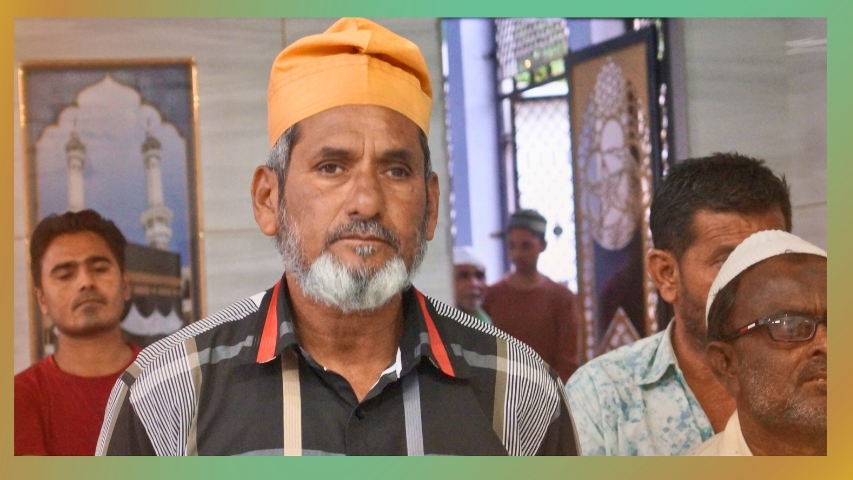
POLITICS: THE SYSTEMATIC TARGETING OF MINORITIES
by HUMRA QURAISHI November 30 2024, 12:00 am Estimated Reading Time: 5 mins, 51 secsUnravelling Communal Tensions: The Fight to Preserve India’s Secular and Cultural Heritage Amid Systematic Targeting of Minorities and Historical Sites. Humra Quraishi writes…
Photography: Vinta Nanda
Communal violence in Sambhal and the controversy over Ajmer Dargah highlight the growing pattern of targeting India's minority communities and historical sites. Allegations of religious structures built over temples have reignited debates, fuelled by Right-Wing narratives. Prominent historian Irfan Habib and opposition leaders warn against rewriting history to polarize communities. The systematic targeting of Islamic sites, from Gyanvapi to Mathura and now Ajmer, threatens India's pluralistic fabric. This article explores the implications of such disputes on social harmony, urging action to preserve India's diverse heritage.
- Sambhal violence claims five lives; lawyer detained.
- Muslim community faces systemic discrimination and fear.
- Religious harmony jeopardized by historical revisionism.
- Ajmer Dargah remains a symbol of spiritual inclusivity.
Communal Unrest in Sambhal: A Reflection of Broader Agendas
What is unfolding in Sambhal, Uttar Pradesh, is both shocking and reflective of the Sangh’s broader agenda, executed with precision across towns. This agenda involves dismantling historic structures, silencing dissent, and suppressing those who present facts. More disturbingly, victims of violence—primarily members of the minority community—are being accused and vilified.
This column is written against the backdrop of communal violence in Sambhal, triggered by the controversy surrounding the centuries-old Shahi mosque. The mosque has become a focal point after Right-Wing groups alleged it was built on a temple site, prompting a survey team to visit the mosque. The situation escalated, leading to disturbing visuals of unrest and the government's handling of the crisis under Right-Wing rulers.

Targeted Attacks and Pressure Tactics
The violence claimed the lives of five Muslim men in Sambhal. Adding to the tension, lawyer Zafar Ali, chief of the Mosque Sadar and Shahi Mosque Committee, who represents the mosque, has been detained for questioning. Observers view this as a pressure tactic to silence him. Just days earlier, Ali had spoken out, alleging that the police were ordered to open fire, leading to deaths caused by law enforcement, not by Muslims as the administration claimed. Now, with a prominent figure like Zafar Ali in custody, the situation has left the Muslim community in shock and fear, unable to voice even basic truths for fear of retaliation or fabricated charges.
Opposition parties in Uttar Pradesh have criticized the BJP for orchestrating the violence in Sambhal. Samajwadi Party chief Akhilesh Yadav accused the BJP of using the survey as a tool to foster "politics of hatred" and distract from electoral malpractice. He stated, “A survey team was deliberately sent in the morning to disrupt discussions about the election. The intention was to create chaos so that no debate on election issues could happen.” Similarly, UP Congress chief Ajay Rai condemned the BJP government, saying, “When the Chief Minister of the state himself gives statements like 'batenge toh katenge', how can there be peace in the state? This is a completely planned incident.”
A History of Targeting Cultural Heritage
The communal unrest today reflects a grim reality: targeted attacks on minorities have become rampant. Instead of promoting harmony, political leaders continue to deliver hate-filled speeches, perpetuating fear and discrimination. This deliberate strategy aims to subdue the Muslim community, confining them to silence and despair in their neighbourhoods, while they already face systemic discrimination on every front.
This is not a new phenomenon. Such tactics by the Sangh have been evident for decades. During the Babri Masjid demolition phase, Khushwant Singh once questioned BJP leader K.R. Malkani about how many more mosques would be targeted. Khushwant had a foresight that the Babri Masjid’s destruction was merely the beginning of the Sangh’s larger agenda to destroy historical and cultural structures, and the human spirit tied to them.
Prominent historian Professor Irfan Habib had warned of these consequences. He stated, “Such a post-factor rationalization of what was done on 6 December 1992 places numerous historical monuments across the country in jeopardy, with an increasing number targeted for destruction by communal Right-Wing forces.” A globally respected scholar and former chairman of the Indian Council of Historical Research, Professor Habib has authored significant works on Mughal history. He was unequivocal in his criticism of the Right-Wing’s role in the Babri Masjid destruction, calling it an attack on India's secular ethos.
“There are no 'Left' or 'Right' Wing historians! All this is a creation of the BJP. If anyone speaks with a scientific outlook, they’re labelled 'Leftist' by them,” Professor Habib remarked. He further noted, “The destruction of the Babri Masjid was an insult to the country and its citizens; an assault on the Indian secular consciousness. As an Indian, I felt insulted—it was a blow to the image of my country.”
Unfolding Patterns: Ajmer Dargah Sharif Controversy
Habib also predicted that such destruction could be repeated. He cautioned against the potential targeting of other mosques, raising concerns about the impartiality of the Archaeological Survey of India (ASI). “If the ASI seeks evidence that the Babri Masjid was built on a temple, any fragment of lime-mortar rubble or medieval baked bricks could suffice to disprove it. But if the intent is to find remnants of a non-Muslim shrine, almost anything could be labelled as a temple relic. Such disputes could become endless or, worse, be resolved by simply declaring ASI findings in favour of the Right-Wing.”
The recent controversy surrounding the Ajmer Dargah Sharif, where a petition claims it was originally a Shiva temple, is yet another instance of the increasing attempts to rewrite history for communal and political gains. The parallels with the Gyanvapi, Mathura, and Sambhal cases are undeniable, as the Ajmer court’s decision to issue notices to various authorities reflects a growing pattern of questioning the origins of Islamic sites. These actions are not isolated but part of a broader agenda aimed at altering the secular fabric of the nation.
The Hindu Sena’s claim, based on references in a book, has been dismissed by Syed Sarwar Chisty of the dargah’s caretaker body as “frivolous assertions aimed at harming the country’s communal harmony.” Such disputes deeply affect not only the minority communities but also the nation’s collective identity. The Ajmer Dargah is not just a Sufi shrine; it is a symbol of spiritual inclusivity and a testament to India’s pluralistic heritage.
The timing of these controversies is particularly concerning. Just as the Sambhal violence led to loss of life and widespread fear, the Ajmer case risks igniting further divisions. The repeated use of legal frameworks to challenge historical sites and stir communal tensions shows a deliberate strategy to foster mistrust and hatred. The echoes of Professor Irfan Habib’s warnings resonate louder today: “The targeting of historical monuments by communal forces places the nation’s heritage in jeopardy.”





-173X130.jpg)

-173X130.jpg)

-173X130.jpg)
-173X130.jpg)

